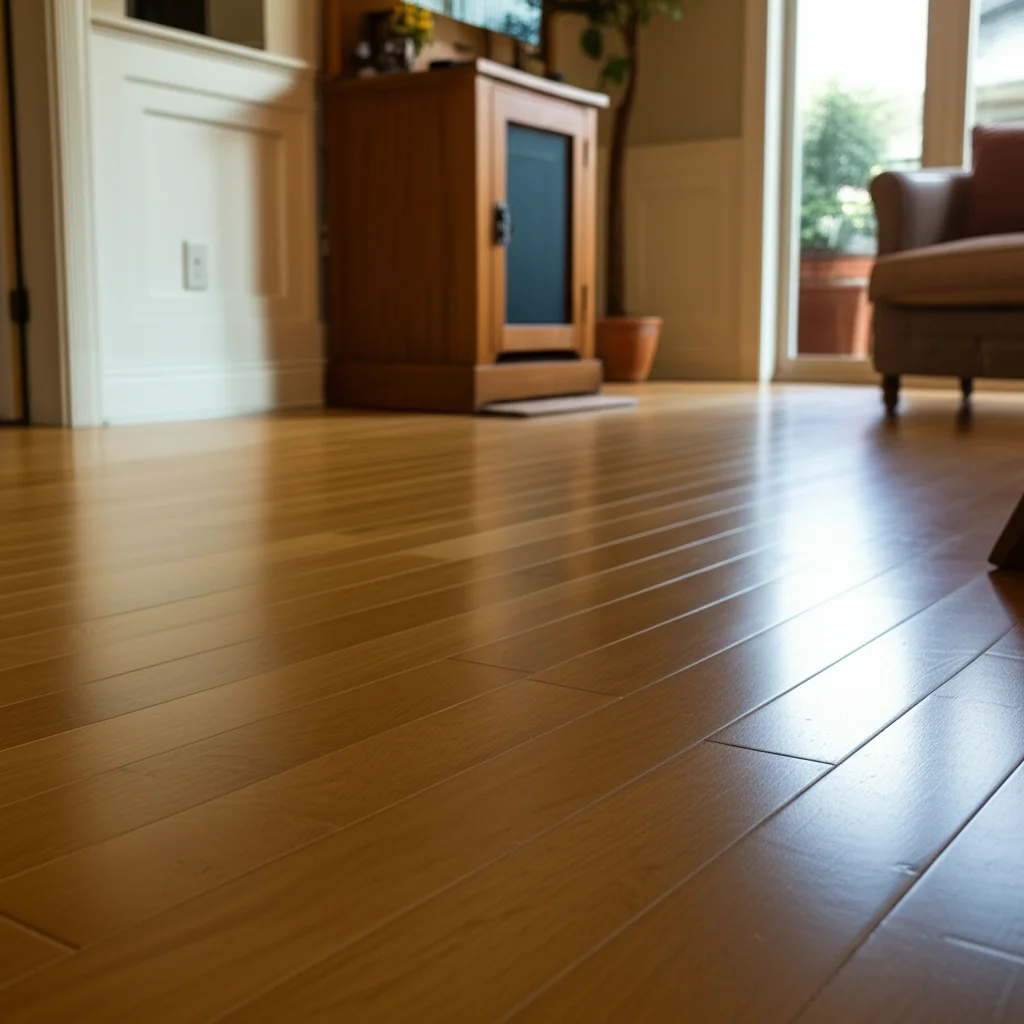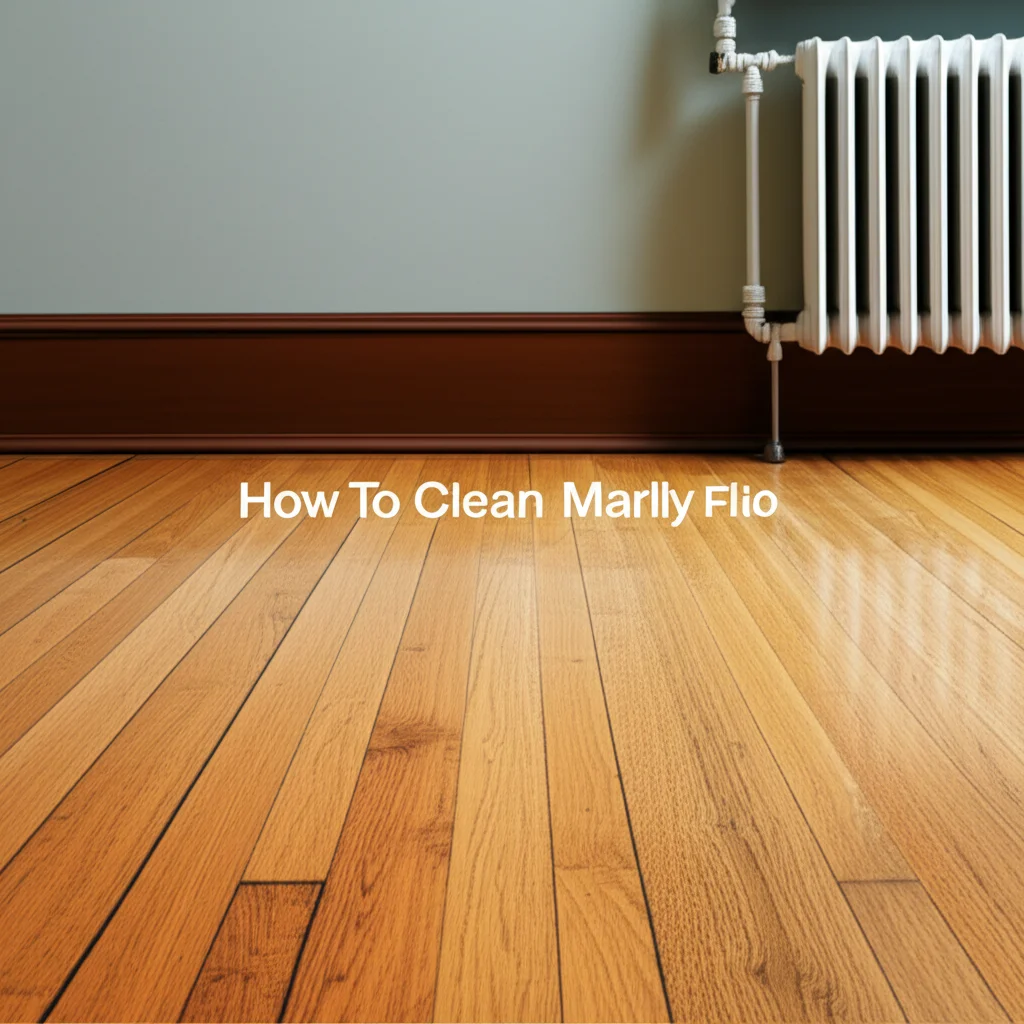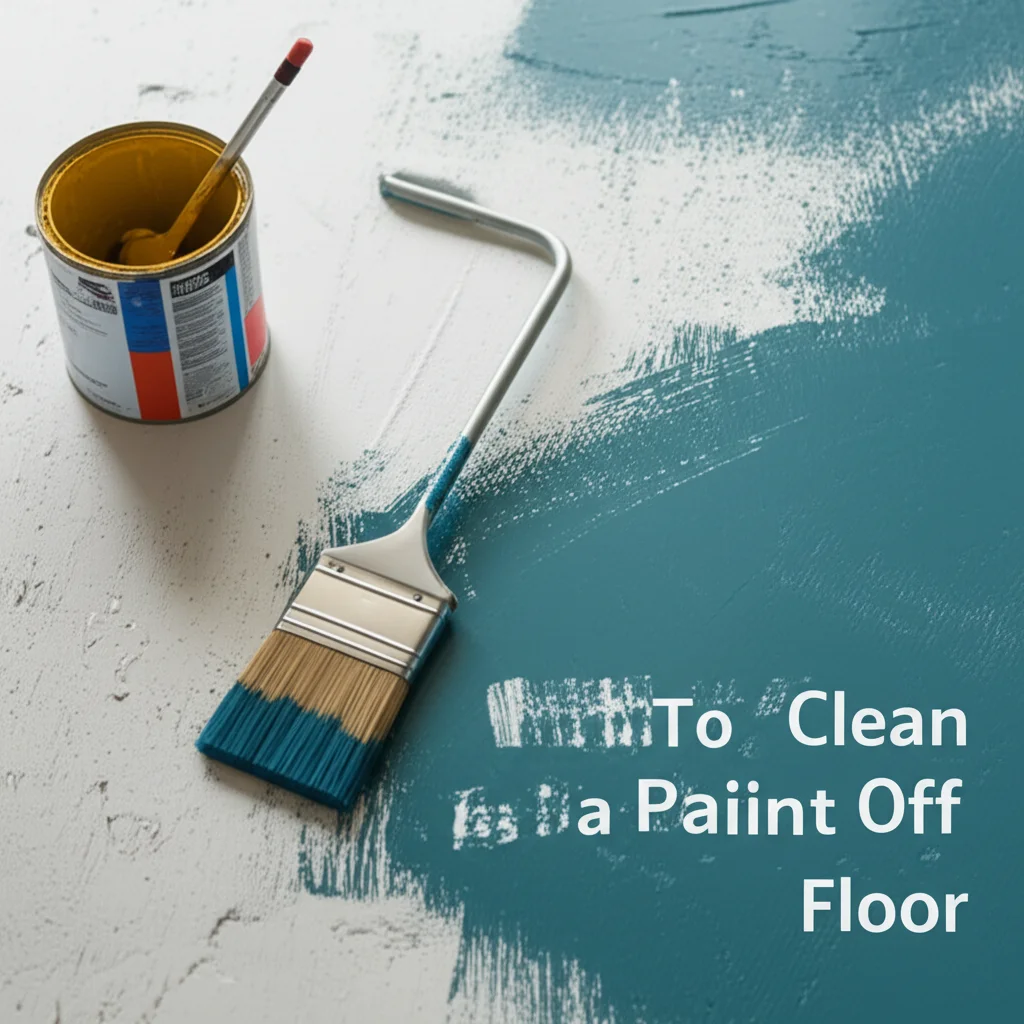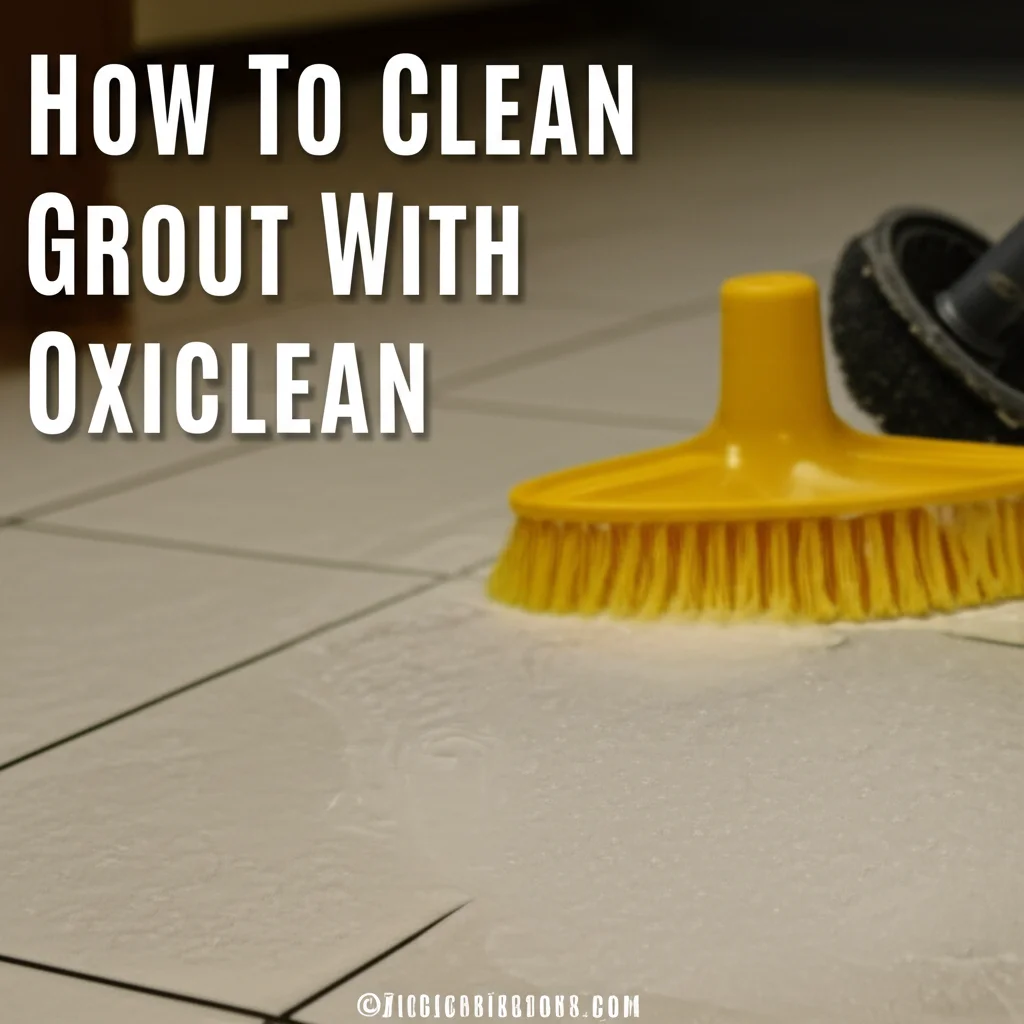· Todd Martin · Flooring Care · 14 min read
How To Clean Engineered Hardwood

How to Clean Engineered Hardwood Floors Safely
Engineered hardwood floors bring a beautiful, natural warmth to any home. They offer the timeless look of solid wood but come with added stability and often a more accessible price point. However, to keep these floors looking their best, you need to understand their specific cleaning needs. This article shows you how to clean engineered hardwood floors correctly. We will cover essential tools, daily routines, deeper cleaning methods, and common mistakes to avoid. My goal is to help you maintain your engineered hardwood for years to come.
Takeaway
Keeping your engineered hardwood floors clean and beautiful is simple with the right approach.
- Sweep or vacuum daily to remove grit.
- Wipe spills immediately to prevent damage.
- Use a damp, not wet, mop with a pH-neutral cleaner for weekly cleaning.
- Avoid steam mops, excessive water, and harsh chemicals.
- Protect floors from scratches with furniture pads and rugs.
Clear Answer
To clean engineered hardwood, start by sweeping or vacuuming daily with a soft attachment. For deeper cleaning, lightly mist a small area with a pH-neutral wood floor cleaner and wipe immediately with a microfiber mop, ensuring minimal moisture. Always clean spills quickly.
Understanding Engineered Hardwood: The Foundation of Cleanliness
Engineered hardwood floors are popular for many homes. They provide the classic appeal of real wood. Yet, they offer a different construction than solid hardwood. This unique design affects how you clean them.
An engineered hardwood board consists of multiple layers. The top layer is a thin veneer of real hardwood. Below this, you find several layers of plywood or high-density fiberboard. These layers are cross-laminated. This layering makes the floor more stable. It also makes it more resistant to changes in temperature and humidity.
Solid hardwood is one piece of wood. It expands and contracts more with moisture. Engineered hardwood handles moisture better due to its layered core. Still, its core layers are vulnerable to water damage. Excessive water can cause the layers to separate. It can also cause the veneer to swell or buckle.
The top veneer is real wood. It often has a durable finish like polyurethane. This finish protects the wood from scratches and spills. Understanding this structure is important for cleaning. You must protect both the wood veneer and the core. This means avoiding harsh chemicals and too much water. Your cleaning method should support the integrity of the floor’s construction. This ensures the floor remains beautiful for a long time.
Essential Tools and Cleaning Products for Engineered Hardwood
Using the right tools and products is crucial for cleaning engineered hardwood. The wrong choices can damage your floors. They can dull the finish or harm the wood itself. Here is what you need and what to avoid.
First, you need a good broom. A soft-bristle broom sweeps up loose dirt without scratching the floor. A vacuum cleaner with a bare floor setting is also essential. This setting turns off the beater bar. The beater bar can scratch and damage wood. Make sure your vacuum has soft wheels too.
For damp cleaning, a microfiber mop works best. Microfiber is absorbent. It also picks up dust and grime effectively. You will also need a spray bottle. This lets you control the amount of cleaner you use. This helps you avoid applying too much liquid.
When it comes to cleaning solutions, choose wisely. A pH-neutral wood floor cleaner is your best option. These cleaners are formulated for wood. They clean without stripping the finish. Many brands offer specific cleaners for engineered wood. You can also mix a very small amount of mild dish soap with water. Always use very little soap, if any.
Avoid certain products at all costs. Never use a steam mop on engineered hardwood. The heat and moisture from steam can delaminate the layers. It can cause permanent damage. Do not use harsh chemicals. These include ammonia-based cleaners, bleach, or oil soaps. Ammonia and bleach can strip the finish. Oil soaps can leave a residue. This residue attracts dirt and makes the floor slippery. Abrasive pads or strong scrub brushes are also bad. They can scratch the veneer. Remember, gentleness is key for engineered hardwood. For general guidance on what to use on any wood floor, you can check out tips on how to clean hardwood floors. Using the right tools and mild, pH-neutral cleaners will help preserve your beautiful floors.
Daily Cleaning Routine for Engineered Hardwood Floors
A consistent daily cleaning routine prevents damage to your engineered hardwood floors. It helps keep them looking new. Most dirt and grit come from outside. These small particles act like sandpaper underfoot. They can scratch your floor’s finish over time.
The first step is simple: sweep or vacuum your floors every day. Use a soft-bristle broom for sweeping. If you vacuum, make sure your vacuum has a hard floor setting. This disables the spinning brush bar. A spinning brush can scratch the wood surface. Pay special attention to high-traffic areas. These include entryways, hallways, and kitchen paths. Removing surface dirt is vital.
Another important daily task is wiping up spills immediately. Engineered hardwood has a real wood veneer. This veneer is protected by a finish. However, liquid can still seep into seams or cracks. If liquid gets under the veneer, it can damage the core. Use a clean, dry cloth to blot spills right away. Do not let spills sit. This quick action prevents stains and moisture damage.
Placing doormats at all entry points also helps. Mats trap dirt and moisture before it enters your home. This reduces the amount of grit brought onto your floors. Consider using area rugs in high-traffic zones too. Rugs add an extra layer of protection. They catch dirt and reduce wear. Following these simple daily steps makes a big difference. They protect your engineered hardwood from everyday wear and tear.
Weekly and Bi-Weekly Cleaning for Engineered Wood
Beyond daily sweeping, engineered hardwood floors benefit from deeper cleaning. This keeps them truly sparkling. This process involves damp mopping. Remember, engineered hardwood does not like a lot of water. My advice is to always use a damp mop, never a wet one.
First, sweep or vacuum your entire floor. This removes loose dirt and dust. Then, prepare your cleaning solution. I recommend a pH-neutral wood floor cleaner. You can dilute it with water according to the product directions. Alternatively, you can use plain water with a tiny drop of dish soap. Fill a spray bottle with your chosen solution. This helps you control the moisture.
Next, lightly mist a small section of the floor with the cleaner. Do not spray a large area at once. This prevents the liquid from sitting too long on the wood. Take your microfiber mop and wipe the misted section clean. The mop head should be damp, not dripping wet. If your mop is too wet, wring it out thoroughly. You want just enough moisture to clean, but not enough to leave puddles.
Work in small sections across the room. Clean one section, then immediately dry it with a second clean, dry microfiber cloth or mop head. This two-step process ensures no moisture remains on the floor surface. Drying immediately is key. It prevents any water from seeping into the floor’s layers. Some people prefer using a specialized engineered wood floor cleaner like Bona. You can find more specific tips for using such products by looking at resources like how to clean engineered wood floors with Bona. This routine will keep your floors clean without causing damage.
Tackling Tough Stains on Engineered Hardwood
Even with regular cleaning, tough stains and scuff marks can appear on engineered hardwood floors. Addressing these quickly and correctly is important. The approach depends on the type of stain. Always start with the gentlest method first.
For common food and beverage spills, act fast. If the spill is fresh, simply wipe it up with a clean, damp cloth. For dried food stains, lightly dampen a cloth with a pH-neutral cleaner. Gently rub the stained area. Avoid scrubbing aggressively, as this can damage the finish.
Grease or oil stains require a slightly different approach. Place a small amount of mineral spirits onto a clean cloth. Rub the greasy spot gently. Mineral spirits help dissolve the grease. After cleaning, wipe the area immediately with a clean, damp cloth to remove any residue. Then dry thoroughly.
Scuff marks are common from shoes or furniture. These often sit on the surface of the finish. You can often remove them with a clean tennis ball. Rub the tennis ball firmly over the scuff mark. The rubber will lift the mark without harming the finish. A standard rubber eraser also works well for smaller scuffs. Gently rub the eraser on the mark.
For ink or marker stains, use rubbing alcohol. Apply a small amount of rubbing alcohol to a cotton swab. Test it in an inconspicuous area first. Then, dab the stain with the swab. Do not rub widely, as this can spread the ink. Blot the stain until it lifts. Afterward, wipe the area with a damp cloth and dry it.
Pet accidents need special care. Dog urine, for example, can penetrate wood and cause dark stains and odors. Blot up urine immediately. Then, use an enzymatic cleaner specifically designed for pet stains on wood floors. These cleaners break down the organic matter. For more detailed instructions on removing pet stains, refer to a guide on how to clean dog urine from hardwood floors. For general guidance on other types of wood stains, consider checking how to clean stains on wood. Always dry the area completely after any stain treatment.
Long-Term Protection and Maintenance of Engineered Hardwood
Proper long-term protection ensures your engineered hardwood floors last for many years. Cleaning is only one part of keeping your floors in great shape. Prevention is often easier than repair.
One crucial step is using furniture pads. Place felt or rubber pads under the legs of all furniture. This includes chairs, tables, and sofas. These pads prevent scratches and dents when furniture moves. Even small movements can cause damage over time. Check and replace these pads regularly. They can wear down or fall off.
Area rugs are also excellent for protection. Place them in high-traffic areas like entryways, hallways, and living rooms. Rugs protect the finish from daily wear and tear. They also absorb sound and add warmth. Choose rugs with a non-slip backing. Make sure the backing is safe for hardwood floors. Some rubber backings can discolor the floor finish.
Maintaining indoor humidity levels is important for all wood floors. Extreme dryness can cause the wood to shrink. High humidity can cause it to swell. Both can lead to cracking or buckling. Use a humidifier in dry months. Use a dehumidifier in humid months. Keep your home’s humidity between 30% and 50%.
Pet owners should also trim their pet’s nails regularly. Long, sharp claws can scratch the floor surface. Consider pet booties for very active pets. Avoid dragging heavy furniture or appliances across the floor. Always lift and carry them. If you must slide something heavy, place plywood or moving blankets underneath. This distributes the weight. It also reduces friction. By following these protective measures, you can significantly extend the life and beauty of your engineered hardwood floors.
Common Cleaning Mistakes to Avoid with Engineered Hardwood
Cleaning engineered hardwood floors requires specific care. Making common mistakes can lead to costly damage. I want to highlight the pitfalls to help you avoid them.
The biggest mistake is using too much water. Engineered hardwood, despite its stability, is not waterproof. Its core layers, often plywood, absorb water. Excessive water can cause swelling, warping, or delamination. This means the layers separate. Never pour water directly onto the floor. Do not use a dripping wet mop. Always wring your mop out very well. It should be just damp.
Another major error is using the wrong cleaning products. Harsh chemicals are a definite no. Avoid cleaners containing ammonia, bleach, or strong acids. These strip the protective finish. This leaves the wood exposed and vulnerable. Oil soaps can also be problematic. They leave a residue that dulls the finish and attracts dirt. Instead, stick to pH-neutral cleaners specifically designed for wood floors. These are gentle yet effective. For instance, some people might assume the cleaning methods for unsealed hardwood floors are similar, but sealed engineered floors require a different, gentler approach.
Steam mops are also highly discouraged. The high heat and moisture from steam can severely damage engineered wood. It can cause delamination and surface damage. Even if the manufacturer says it is fine, many flooring professionals advise against it. The risk of irreversible damage is too high.
Ignoring spills is another mistake. Liquids, especially acidic ones like fruit juice or wine, can quickly stain and damage the finish. Wipe up any spill immediately with a clean, dry cloth. Do not let it sit, even for a few minutes. Procrastination can lead to permanent marks.
Lastly, not cleaning regularly is a mistake. Allowing dirt, dust, and grit to accumulate means they act like sandpaper every time someone walks on the floor. This leads to micro-scratches and dullness over time. Regular sweeping or vacuuming is your first line of defense. By avoiding these common errors, you protect your investment. Your engineered hardwood floors will stay beautiful for many years.
FAQ Section
Can I use a steam mop on engineered hardwood?
No, you should not use a steam mop on engineered hardwood floors. The heat and excessive moisture from a steam mop can cause the layers of the engineered wood to separate. This is called delamination. It can also cause warping or swelling, leading to permanent damage to your floor.
Is vinegar safe for engineered hardwood floors?
Vinegar is generally not safe for engineered hardwood floors. Although it is a natural cleaner, its acidic nature can strip or dull the protective finish on your engineered wood. This leaves the wood vulnerable to damage and reduces its lifespan. Stick to pH-neutral cleaners.
How often should I clean my engineered hardwood floors?
You should sweep or vacuum your engineered hardwood floors daily to remove grit and dust. Perform a damp mop cleaning with a pH-neutral wood cleaner weekly or bi-weekly. Wipe up any spills immediately to prevent stains and moisture damage.
What is the best cleaner for engineered hardwood?
The best cleaner for engineered hardwood floors is a pH-neutral wood floor cleaner. Many brands offer specific formulas designed for engineered wood. These cleaners are gentle on the finish. They effectively remove dirt without leaving residue or causing damage.
How do I remove scuff marks from engineered hardwood?
You can often remove scuff marks from engineered hardwood floors with a clean tennis ball or a rubber eraser. Gently rub the tennis ball or eraser over the scuff mark. The friction and material will lift the mark from the floor’s surface without damaging the finish.
Can I wax or polish engineered hardwood?
In most cases, you should not wax or polish engineered hardwood floors. Most engineered hardwood comes with a durable, factory-applied finish that does not require wax. Applying wax or polish can create a sticky residue, dull the finish, or make the floor slippery. Always check your manufacturer’s recommendations first.
Conclusion
Cleaning engineered hardwood floors does not have to be a chore. It is simple when you understand their unique needs. We have explored the proper tools, daily habits, and deeper cleaning methods. We also covered how to tackle tough stains and protect your floors for the future. Remember that prevention, like using furniture pads and quickly wiping spills, goes a long way.
By avoiding common mistakes, such as using too much water or harsh chemicals, you ensure the longevity and beauty of your flooring. Your engineered hardwood floors are a significant investment in your home’s comfort and style. With the right care, you can keep them looking beautiful for many years. Start implementing these tips today to effectively clean engineered hardwood floors and preserve their natural elegance. Your floors will thank you.





